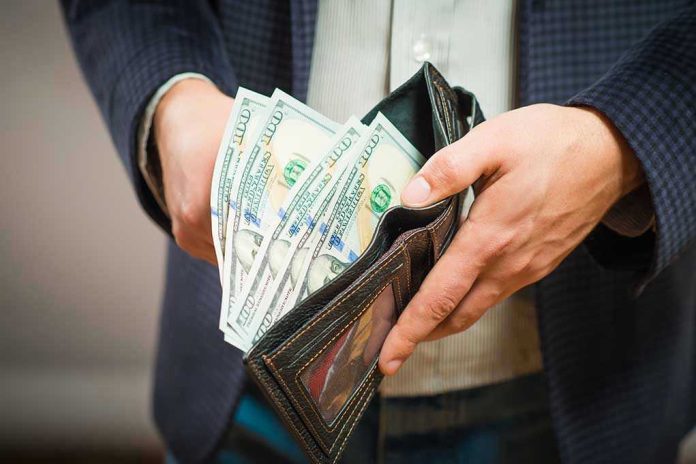
Imagine waking up tomorrow and knowing, with clarity, exactly how much money you need for a life that feels complete—no more, no less—freeing you from the endless treadmill of financial anxiety.
Story Snapshot
- Defining a personal sufficiency number shifts focus from endless wealth to intentional well-being.
- This approach personalizes financial planning, reducing stress and aligning money with values.
- Recent years have seen therapists and financial planners unite to promote sufficiency as a mental health tool.
- Sufficiency is subjective, evolving with life circumstances, and gaining traction in policy and business.
Why the Sufficiency Number Changes Everything About Money and Stress
Americans over forty have seen enough economic booms, busts, and “get rich quick” schemes to know that chasing “more” rarely brings peace. The personal sufficiency number reframes the game: instead of pursuing an ever-rising net worth or comparing yourself to the Joneses, you identify the specific amount that supports your needs, values, and aspirations. This simple, radical calculation is unique to each person, and it’s becoming the go-to strategy for those who want to escape financial anxiety and live intentionally.
Financial planners and mental health professionals now work together, urging clients to replace vague financial goals like “save as much as possible” with a concrete sufficiency number. Mainstream media picked up on this movement in August 2025, spotlighting stories of people who found relief by setting their own thresholds for “enough.” This trend doesn’t just challenge the culture of accumulation—it offers a practical, values-driven alternative that is proven to reduce stress and improve satisfaction with what you have.
The Roots of Sufficiency: From Ancient Wisdom to Modern Relevance
Defining “enough” is not a new idea. Stoic philosophers and Buddhist monks have long questioned the value of excess, favoring contentment over accumulation. In recent decades, the sufficiency concept evolved in response to the 2008 financial crisis, the rise of minimalist lifestyles, and the growing FIRE (Financial Independence, Retire Early) movement. By the 2020s, economic uncertainty and rising living costs spurred a renewed interest in financial clarity and sufficiency-centered planning—an antidote to both consumerism and anxiety.
Government agencies and nonprofits have institutionalized sufficiency, using standardized formulas to determine who qualifies for basic social support. Businesses, too, are applying sufficiency benchmarks to measure sustainable profitability and resilience, signaling a shift from endless growth toward long-term stability. Yet, the most powerful impact is at the personal level, where individuals use sufficiency to regain control and find contentment, regardless of their income bracket.
How the Sufficiency Number Reduces Anxiety and Aligns Values
The crux of the sufficiency number is its subjectivity—no two people land on the same figure, and everyone’s number evolves with life changes. Financial planners like Eric Croak and Eleanor Victorioso guide clients through exercises that help define what truly matters: Is it security, freedom, generosity, or legacy? Therapists such as Brooke Brandeberry and Erinn Everhart report that clients who adopt this framework experience significant reductions in anxiety, as money decisions become aligned with internal purpose rather than external validation.
This shift is more than psychological. People who define their sufficiency number report making better spending choices, experiencing less guilt about purchases, and feeling more satisfied with their current resources. On a societal level, the trend suggests a move toward values-based consumption, reduced status competition, and greater resilience to economic shocks. Financial sufficiency doesn’t just relieve stress—it fosters stability, adaptability, and a sense of control in uncertain times.
The Debate: Standardization vs. Personalization in Defining “Enough”
While sufficiency is gaining broad acceptance, debate persists over who should define it. Government and business leaders favor standardization, using fixed thresholds to determine eligibility for programs or to benchmark sustainability. In contrast, financial planners and therapists argue for personalization, emphasizing that sufficiency must reflect individual needs, values, and life stages.
This New Personal Finance Framework Can Reduce Stress pic.twitter.com/EzD8JznNY7
— Emilia Kile (@EmiliaKile) August 14, 2025
Experts agree on the outcome: whether standardized or personalized, defining sufficiency leads to improved well-being, better decision-making, and greater financial stability. The path forward will likely blend both perspectives, as individuals and institutions seek balance between universal benchmarks and personal meaning. For now, the sufficiency number stands as a powerful tool for those ready to step off the hamster wheel and claim a life defined by their own measures of “enough.”
Sources:
MindBodyGreen: What Is a Personal Sufficiency Number? It Can Help Reduce Stress
DWD-DET: Economic Self-Sufficiency Policy
Sam Wilks: Financial Independence and Personal Responsibility
RACOJA Ventures: The Power of Sufficiency in Business













